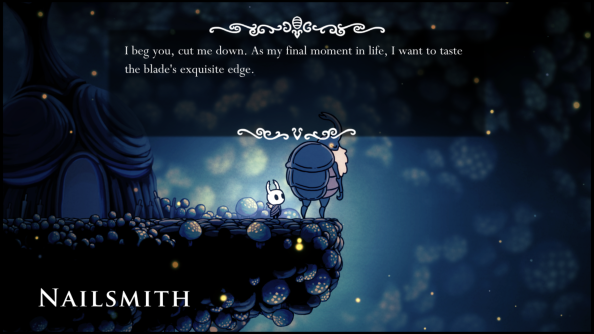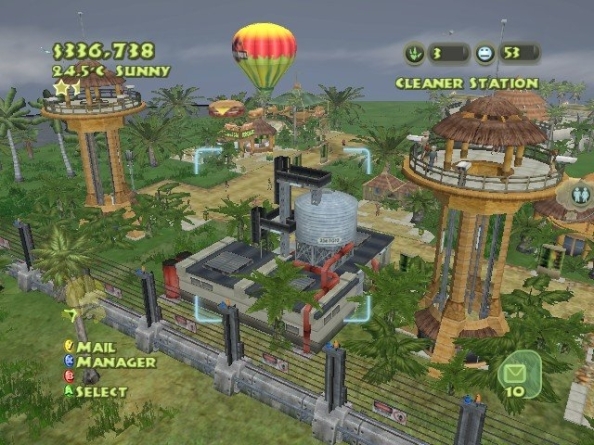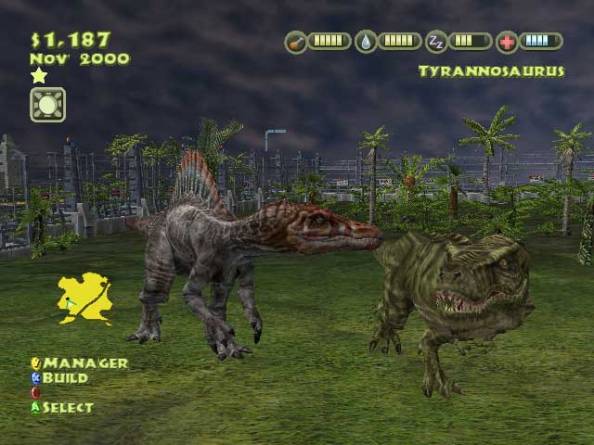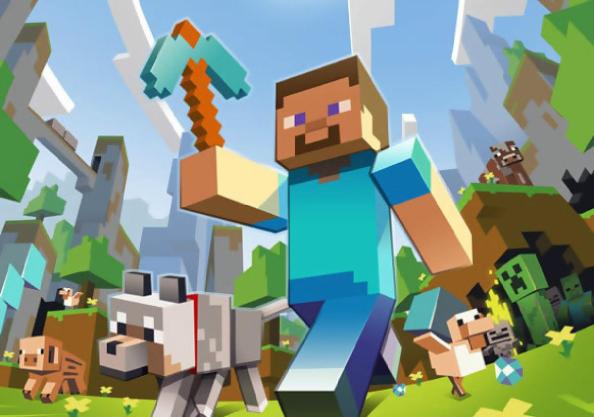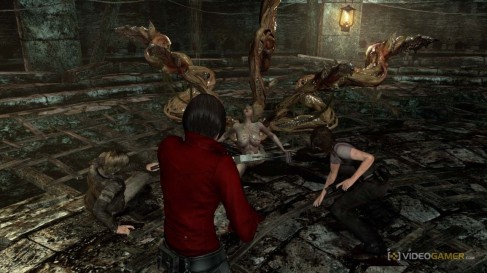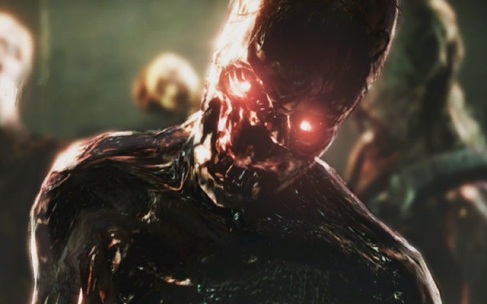
Ezio enjoys fine wine, long walks on the rooftop, and flinging himself off towering buildings as if a plate of steel and a pile of hay will help him survive.
Years ago, a friend of mine had me play a little bit of Assassin’s Creed to kill time. I didn’t get through much–just the first few tutorials–but it intrigued me. Then after hearing the entire video game community collectively climax over the series (and finding a copy of Assassin’s Creed II for $6 at GameStop), I decided I needed to see what had absconded with everyone’s attention for so long. Having just finished the game, I think I can capture its true essence with one sentence; Assassin’s Creed II allows players the rare opportunity to travel through time to visit the wonders of Renaissance Italy, see the sights from the heights of marvelous buildings, travel through the streets of Venice in a gondola, and meet historical personalities both famous and infamous…and then kill them.

Our hero: daring, bold, eager, cross-eyed, and 100% irrelevant to the plot.
Mixing sandbox-ish and platform-ish designs, Assassin’s Creed II provides 20-ish hours of interesting-ish gameplay. The game opens with Desmond Miles busting out of an Abstergo holding cell with his noticeably cross-eyed love interest in a thrilling escape sequence that I assume would make sense had I played the first game. After establishing some stuff about the battle between the Templars and the Assassins, Desmond straps himself into a virtual reality machine called the Animus in order that we, as players, may forget everything we just learned about Desmond to focus on the real story; Ezio Auditore, a cross-eyed,15th-century nobleman, takes revenge on a conspiracy for the murder of his cross-eyed father and brothers. After their deaths, Ezio discovers his heritage as part of the Assassin organization, and he sheds his plain, average garb of a Florentine in favor of a gaudy white robe, hood, and armor that…helps him blend in with the average folk around him.
I know the frame story would (likely) make more sense in the context of the other games, but honestly I just don’t care. Video games have never needed story arcs or direct sequels before, and it actually sort of helps if they don’t. After all, Hollywood can expect people to pay three dollars at a Redbox if they want to understand the latest money-desperate sequel before, but games that charge a minimum of $30 and then require an hour of gameplay per dollar spent, I’d much prefer skipping to the better games rather than paying the time and money to play them sequentially. Case in point: when I bought this game, I asked the guy at GameStop which Assassin’s Creed game he recommended I start with. He suggested this one, and I thanked him for his expertise. Then Anne asked the girl working in the store whether she could recommend Disgaea 3 or 4. She suggested starting with 3 because “It comes first, so you don’t want to miss out on the story,” and we both wondered how often she sleeps with the manager to keep her job.

Ezio flying on a da Vinci prototype. I wanted to make a joke on decoding, but they actually have Leonardo crack codes–with all seriousness–regularly in the game.
Still, even with the solid storyline following Ezio, I didn’t exactly burn with desire to uncover the story–even with the plot-based sub-quest with its own menu section cleverly titled “The Truth.” Ezio’s–and by extension the game’s–existence depends on killing people, the story does the bare minimum to prop up that premise. But since the term “assassin” implies a political murder, and since they seemed to want a fairly credible historical plot–at least until they start casting magic spells during the final boss fight–the writers had their hands full trying to tie together a series of actual murders, while also referring to any minor skirmishes along the way as “assassinations” as well.
At its heart, ACII revolves around stealth, which along with babysitting missions and quick time events, end up topping lists of things most likely to inspire players to send dead animals to the game designers. However, while not quite as effective as Batman: Arkham Asylum, the stealth mechanics don’t detract from the game. Note that I say “don’t detract from,” not “add to.” They don’t really encourage covert behavior, as the player has too many options for reducing notoriety among the NPCs. For instance, you could lure citizens away with a handful of coins tossed into the street, then drop the body of a guard killed quietly on a rooftop down to draw the attention of a larger group of guards, then blend in with a crowd until you reach the guarded treasure–or you could just stab the guards in broad daylight, then turn around to find one of hundreds of posters plastered throughout the city with your face on it, tear it down, and everyone will forget that anything happened, despite the 99 other posters still hanging in plain view. I ended up running, leaping, climbing and flipping through city streets littered with corpses, all with blood trails leading directly to me, and no one cared. And if anyone did voice concern that I ought to not hang out on the roof of the palace, I could just stab them in the throat, rip down another poster, and continue on with my business.

I so rarely get the chance to depict a complete combat sequence using a photo instead of a video. . .
While I have to admit in a certain level of satisfaction in walking up to an unsuspecting victim and thrusting my long, hard, rod of steel into their skulls, or leaping down from the sky to flatten them beneath me, breaking my fall with their spines, I mastered that very quickly in the game. Because Ubisoft focused on historicity and realism, though, they didn’t escalate the abilities of enemies. While yes, I have often wondered how so many Final Fantasy enemies can withstand explosions, gunshots, and swords through their torsos without so much as a strong cough throwing them off balance, I understand the reason for this; it keeps the game from getting stale. ACII starts off at a reasonably simple difficulty setting, then as the player gains stronger weapons and armor it…well it doesn’t really change much at all. Equipment doesn’t noticeably change your performance, enemies do just as little damage to you all throughout the game; even as you gain more health, it only allows you to stumble off of taller and taller buildings. And no matter how sharp your knives get, they can’t murder someone any more than “completely dead.” It gave me the option of using a poisoned blade at one point. I never even figured out how to use it, since stabbing them in the throat proved just a little more effective. So the game basically provides a series of platforms to help an Italian guy kill enemies in one hit by falling on their heads. Great, Ubisoft. You’ve invented Super Mario. Except cross-eyed.

Ezio staring at the hand of the King of the Cosmos, which could easily go unnoticed as the player doesn’t need to focus on much except the radar in the lower-right.
“Up yours, Jake!” You say? “This won game of the year!” Yes…so have lots of games. Each year, I might add. People hand out game of the year awards like copies of The Watchtower. I know I’ve pretty much panned a super-popular game, but if you’ll stay with me, I want you to consider one more thing; pretend you don’t see anything that doesn’t actually have a function. If entire cities become either smooth or climbable walls guarding the occasional treasure chest full of money that becomes obsolete by chapter five, or platforms to walk on or swim through, then you’ll stop seeing any variation in the different locations. Each city contains the same assortment of posts, ladders, haystacks, etc, and except for the framing story not allowing access to certain parts of the map, you can access any area regardless of skills learned, immediately. All the sandbox-ish missions blend together–run through some section of town very fast, get in a fight, or kill some guy–with no bearing on the plot and no reward except the practically useless cash. Even the main missions only redeem themselves by advancing the story.

Our cross-eyed hero, from the front. Seriously. While it doesn’t add anything that the previous shot didn’t show you, I literally could not find another shot of gameplay.
While most games offer less actual variety of play than they seem, ACII pretty much consists of nothing except follow your radar to the next point on the map. Occasionally, you press a button once you get there–and not even like a quick time event, either. At the very beginning of the game, Desmond approached the Animus virtual reality simulator and the game told me to “press any button.” No timer. No encroaching threat. Nothing. While quick time events have always annoyed me, Ubisoft found something even more pointless: the slow time event. They provide an over-abundance of most missions with little or no variation in them, and it ends up turning into a geographical scavenger hunt more than anything else. Furthermore, traditional platformers required the player to properly assess the physics engine so as not to fling themselves past ledges and into the gaping abyss beyond like a Depression-era stock broker, but as this makes 3D platforming about as easy as juggling angry magpies, so the player only needs to hold down the X button to automatically hit the next ledge, pole or brick conspicuously sticking out of the wall for the eager climber. But not to sacrifice difficulty, they made the controls hypersensitive to directly, so at any moment–usually while the camera auto-rotates–Ezio could flip along his public trapeze and then suddenly turn and leap crotch-first into the nearest wall, then slide down to his death like the world’s least-funny Looney Toon.
I don’t really understand the hype around this game. Look at the pictures I posted; notice how little gameplay you see? When you google screenshots for a game and only get photos from the trailer, you can guarantee the developers did that to hide the lack of interesting gameplay from the market. So I guess it kept my interest, and I got through the whole thing, mostly in the way my students get through the books I assign–they get bored halfway through, then skip to the end, using Spark Notes to fill in the gaps. And seriously…with as much detail as the PS3 can render, why does everyone have crossed eyes?


